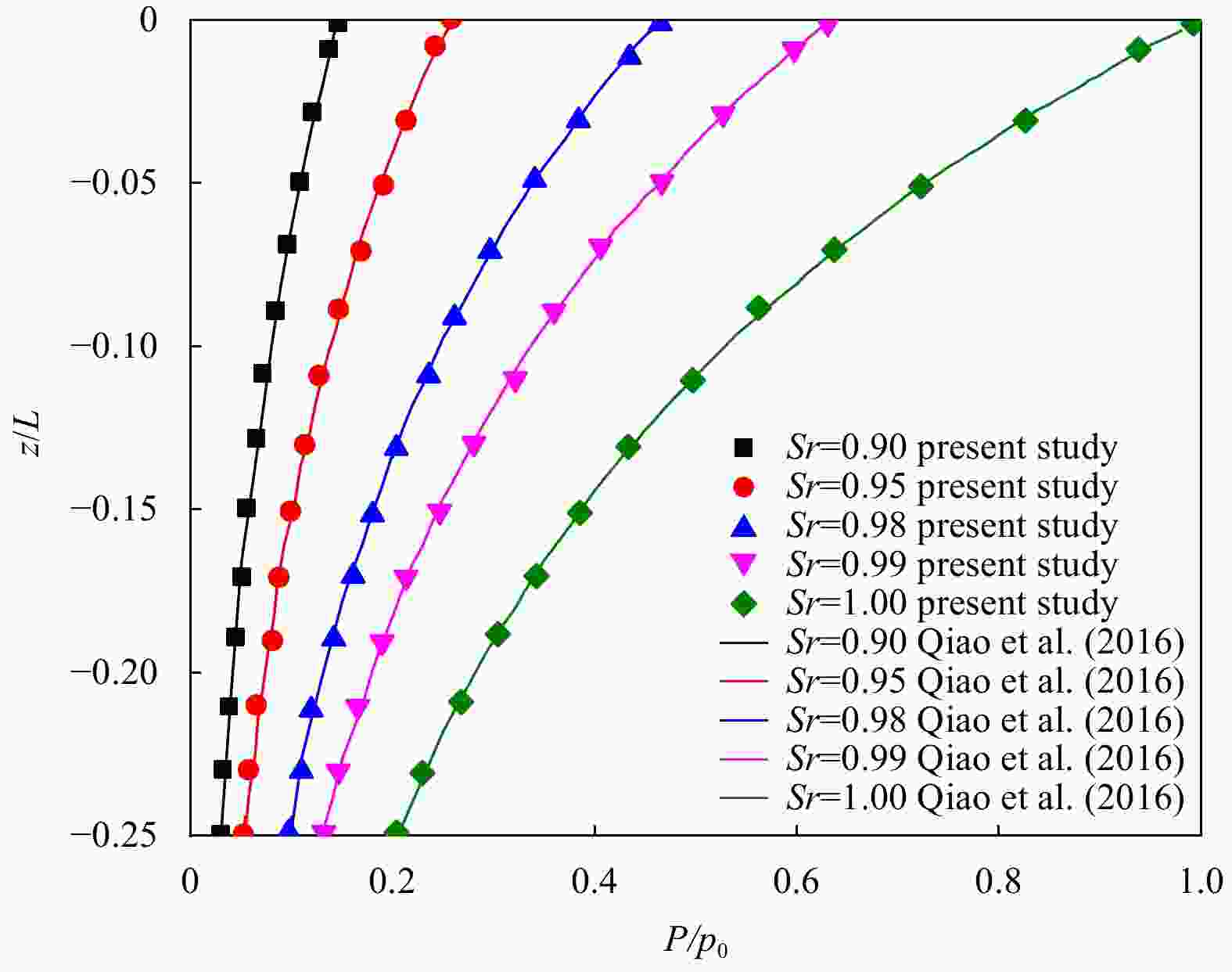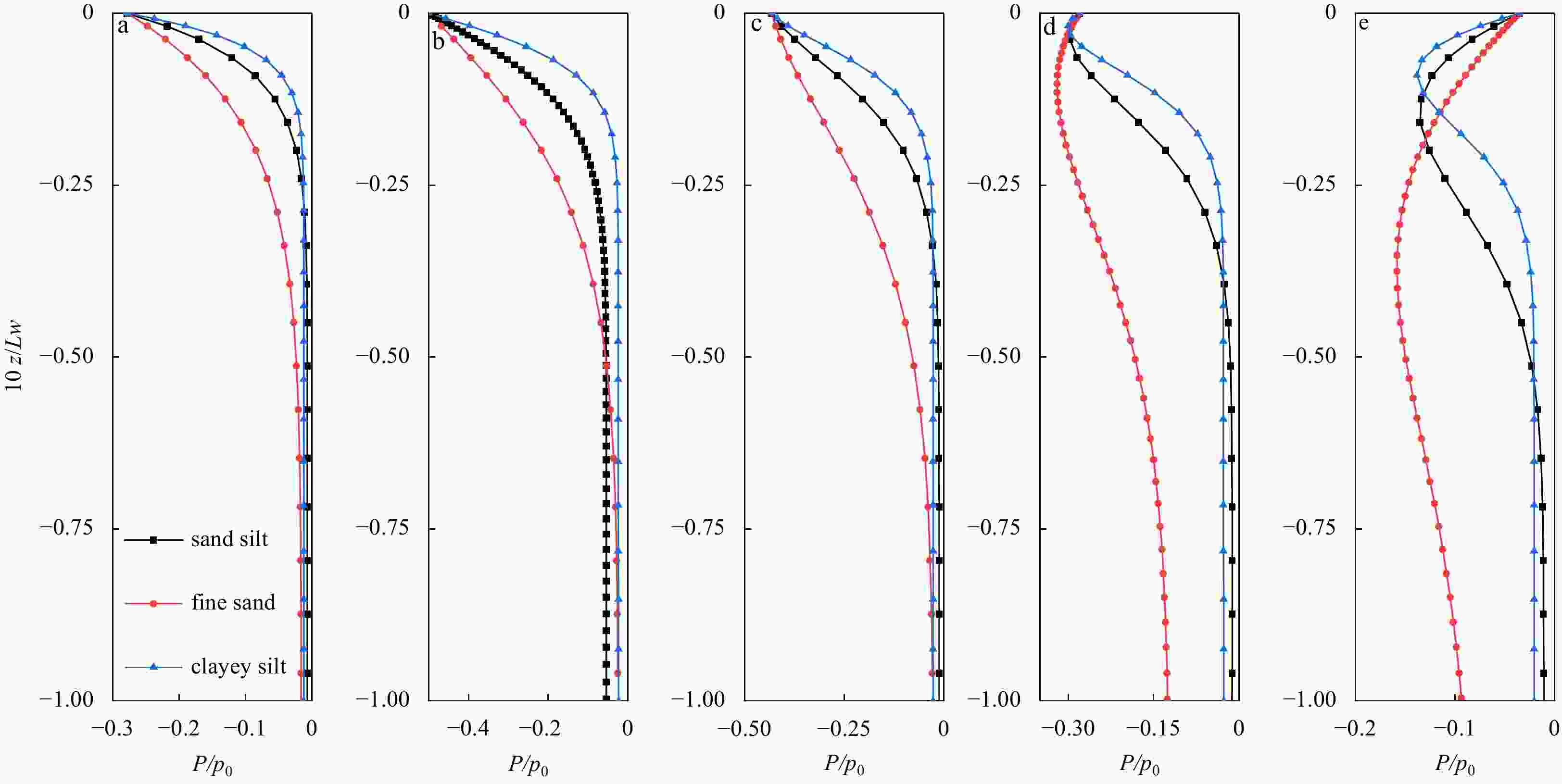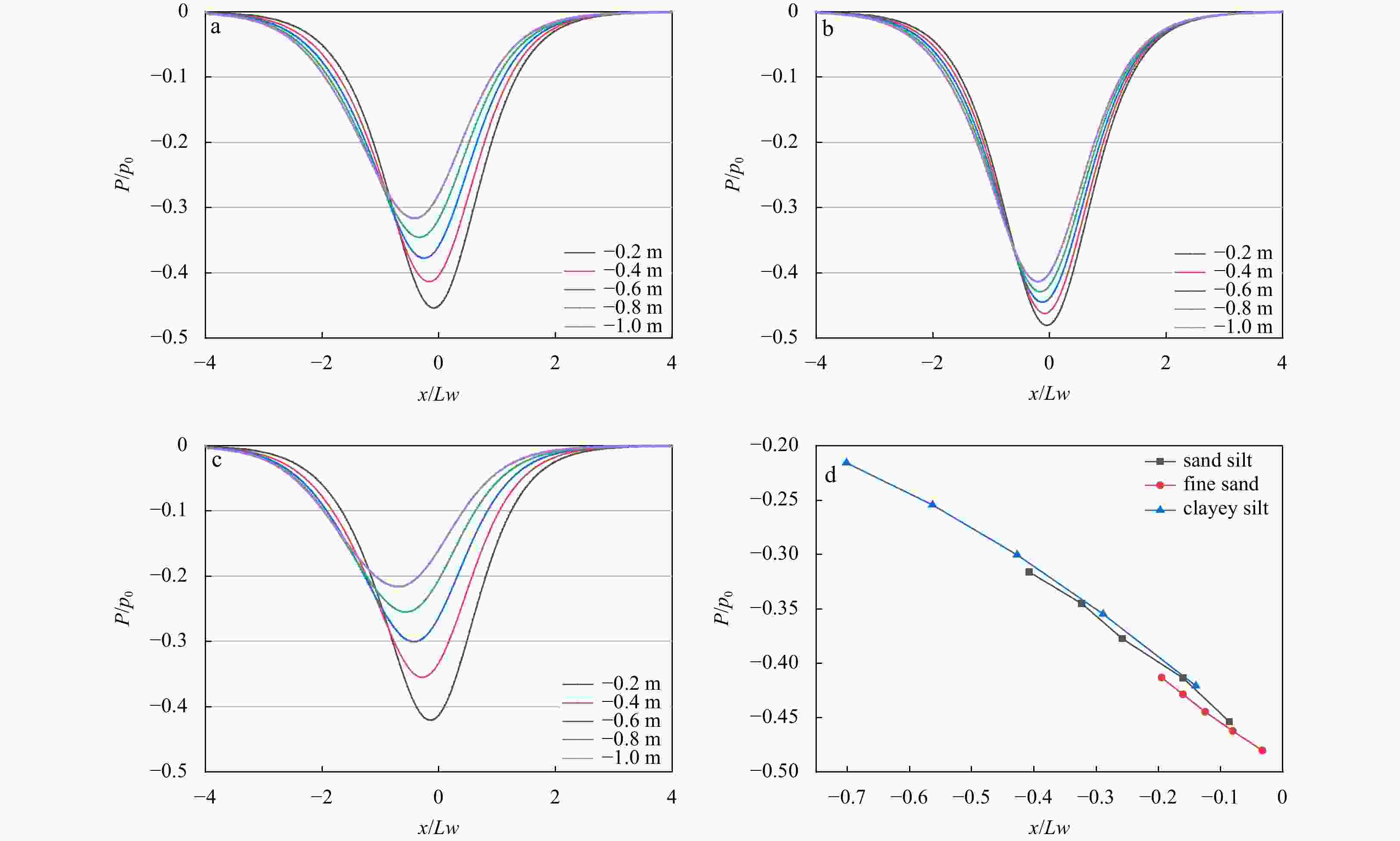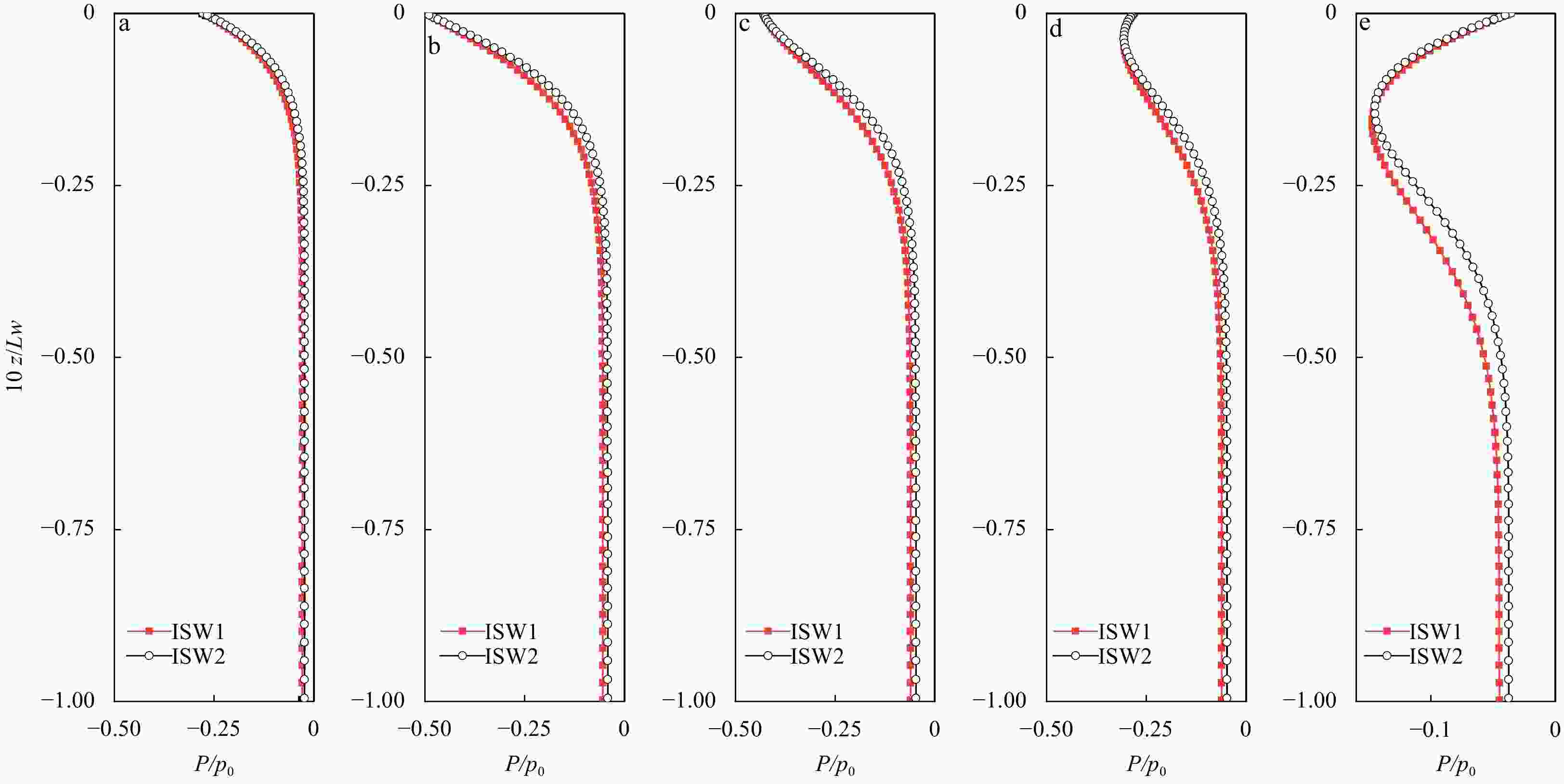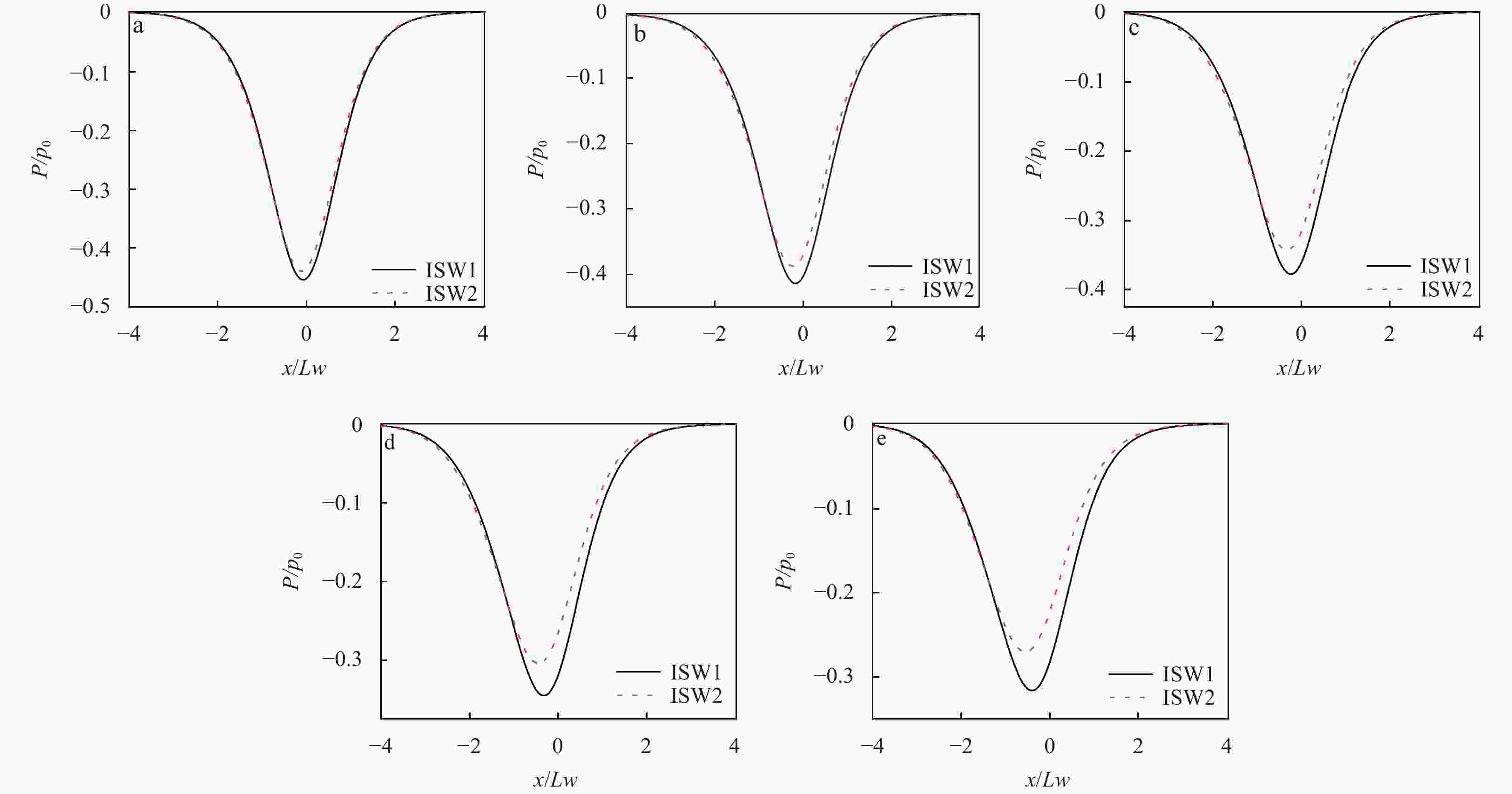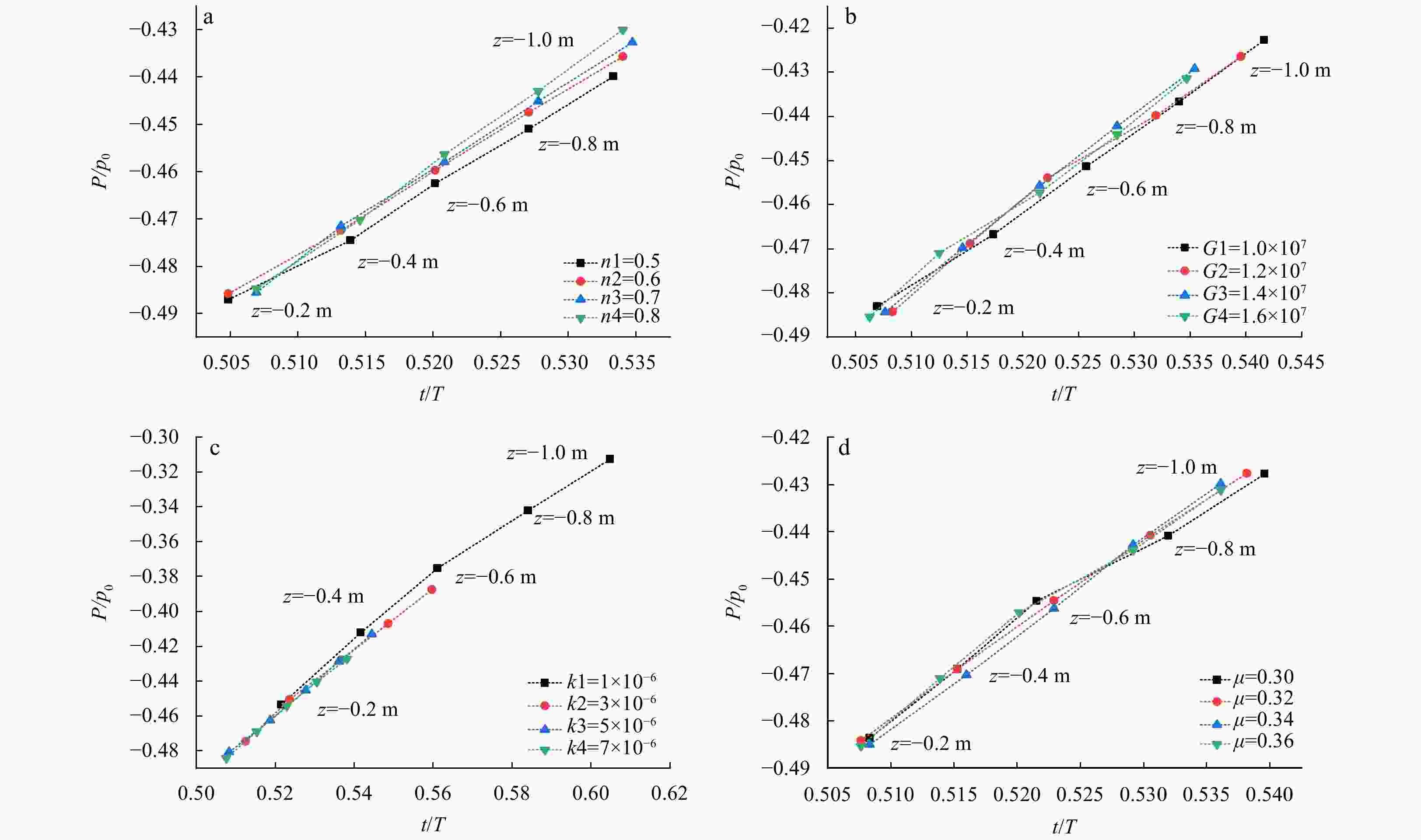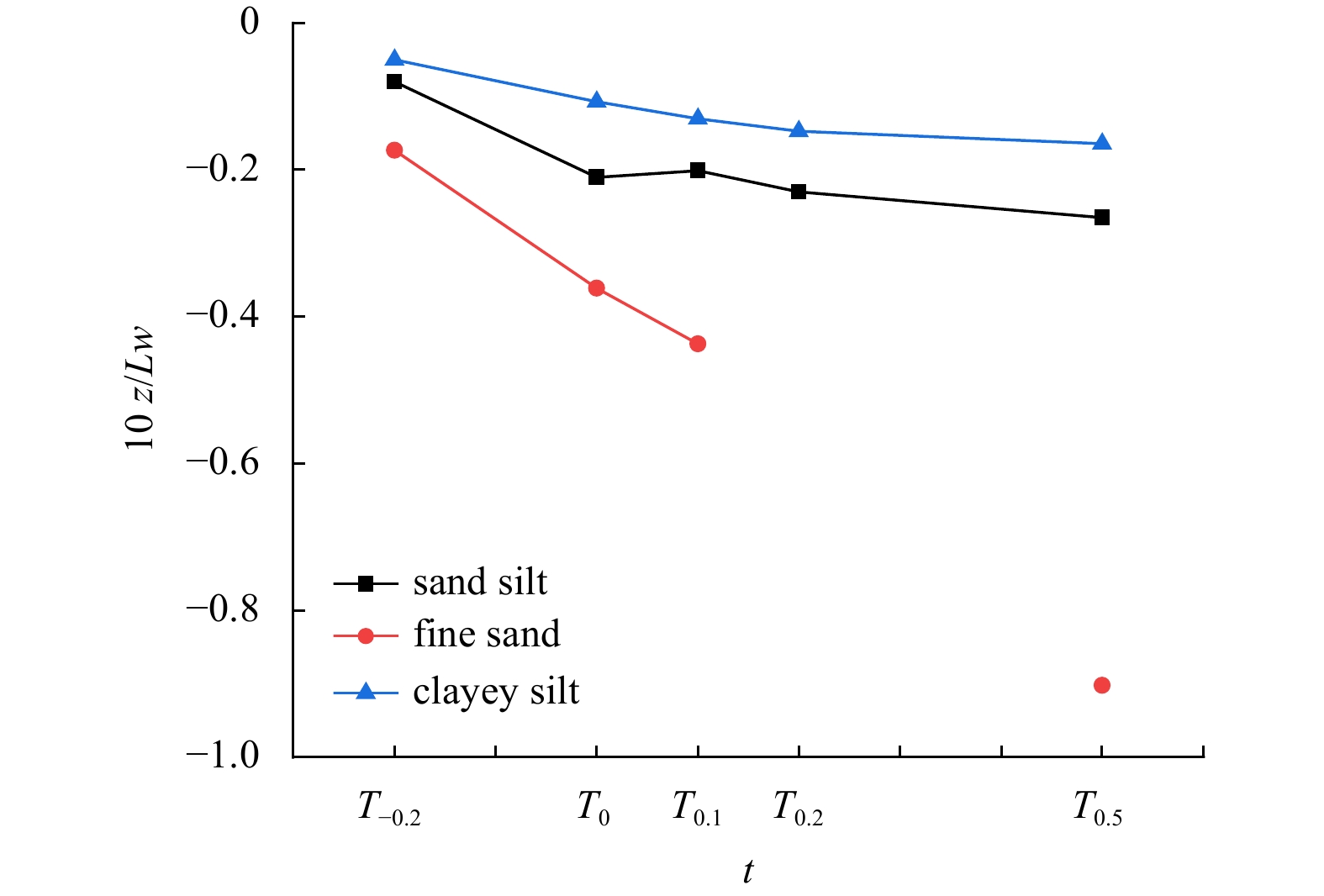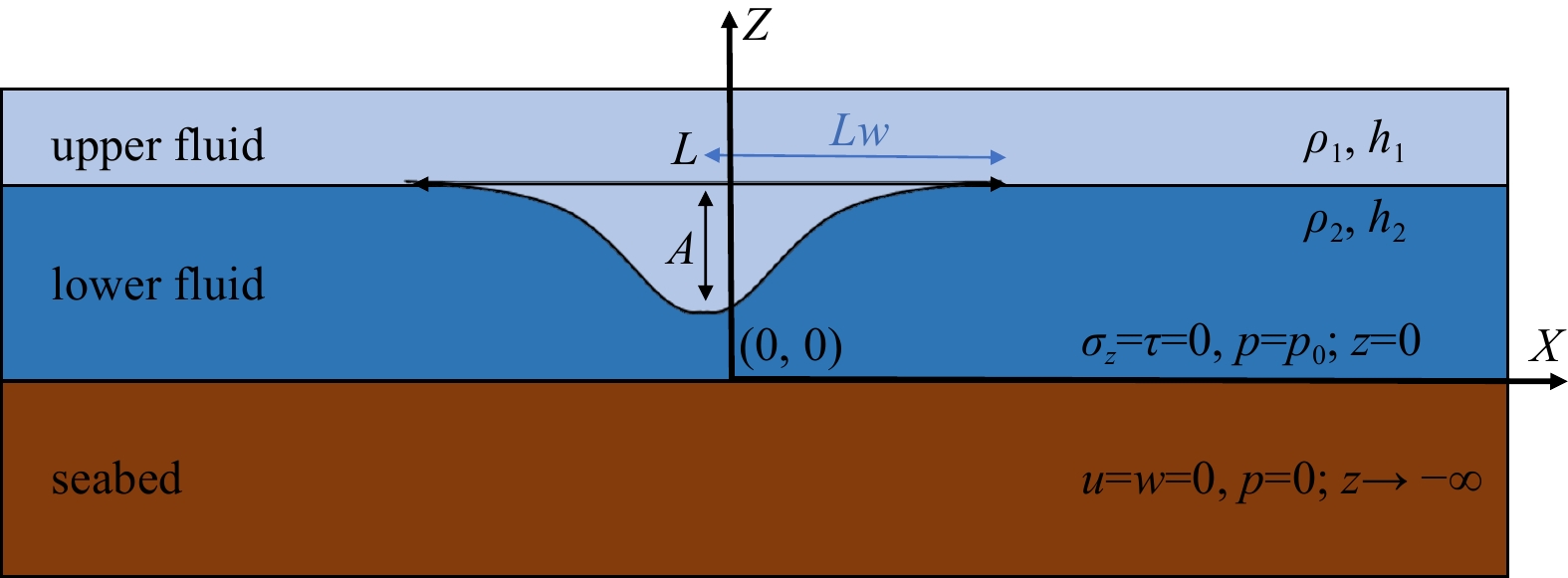Spatial and temporal variation process of seabed dynamic response induced by the internal solitary wave
-
Abstract: Internal solitary wave (ISW) is often accompanied by huge energy transport, which will change the pore water pressure in the seabed. Based on the two-dimensional Biot consolidation theory, the excess pore water pressure in seabed was simulated, and the spatiotemporal distribution characteristics of excess pore water pressure was studied. As the parameters of both ISW and seabed can affect the excess pore water pressure, the distribution of pore water pressure showed both dissipation and phase lag. And parametric studies were done on these two phenomena. Due to influenced by the phase lag of excess pore water pressure, the penetration depth under the site of northern South China Sea with total water depth 327 m, induced by typical internal solitary wave increased by 26.19%, 53.27% and 149.86% from T0 to T0.5 in sand silt, clayey silt and fine sand seabed, respectively. That means the effect of ISW on seabed will be underestimated if we only take into accout the penetration depth under ISW trough, especially for fine sand seabed. In addition, the concept of “amplitude-depth ratio” had been introduced to describe the influence of ISW on seabed dynamic response in the actual marine environment. In present study, it is negatively correlated with the excess pore water pressure, and an ISW with smaller amplitude-depth ratio can wide the range of lateral impacts. Our study results help understand the seabed damage induced by the interaction between ISW and seabed.
-
Key words:
- internal solitary wave /
- pore water pressure /
- seabed /
- dynamic response /
- variation process
-
Figure 2. Comparison of present simulation and results of the literature (Qiao et al., 2016). Symbols were results of the present paper, solid lines were results of the literature (Qiao et al., 2016).
Table 1. Parameters of internal solitary wave (ISW) in the northern South China Sea
Parameters Upper fluid thickness
h1/mLower fluid thickness
h2/mUpper fluid density
$ {\rho }_{1} $/(kg·m−3)Lower fluid density
$ {\rho }_{2} $/(kg·m−3)Amplitude
A/mPeriod
T/sISW1 112 215 1 022.5 1 025.5 80.9 1 440 ISW2 40 300 1 022.5 1 025.5 165 840 Table 2. Surface layer sediment properties of the northern slope of the South China Sea
Type Shear modulus
G/PaPermeability
k/(m·s−1)Poisson’s ratio/
μmPore water bulk density
γw/(kN·m−3)Porosity n Saturation Sr Fine sand 1×107 5×10−6 0.33 10 260 0.541 1 or 0.98, in present study Sr=0.98 Sandy silt 1×107 1×10−6 0.31 10 260 0.717 1 or 0.98, in present study Sr=0.98 Clayey silt 1.48×107 3.47×10−7 0.31 10 260 0.753 1 or 0.98, in present study Sr=0.98 -
Alford M H, Peacock T, Mackinnon J A, et al. 2015. The formation and fate of internal waves in the South China Sea. Nature, 521(7550): 65–69. doi: 10.1038/nature14399 Chen Chengyi, Hsu J R C. 2005. Interaction between internal waves and a permeable seabed. Ocean Engineering, 32(5–6): 587–621 Chen Shanshan, Sun Yunbao, Wu Shiguo. 2012. Sea bottom landslide in the Shenhu area on the north margin of South China sea and triggering mechanisms. Marine Geology Letters (in Chinese), 28(6): 40–45 Duda T F, Lynch J F, Irish J D, et al. 2004. Internal tide and nonlinear internal wave behavior at the continental slope in the northern South China Sea. IEEE Journal of Oceanic Engineering, 29(4): 1105–1130. doi: 10.1109/JOE.2004.836998 Guo Xingsen, Nian Tingkai, Wang Dong, et al. 2022a. Evaluation of undrained shear strength of surficial marine clays using ball penetration-based CFD modelling. Acta Geotechnica, 17(5): 1627–1643. doi: 10.1007/s11440-021-01347-x Guo Xingsen, Nian Tingkai, Zhao Wei, et al. 2022b. Centrifuge experiment on the penetration test for evaluating undrained strength of deep-sea surface soils. International Journal of Mining Science and Technology, 32(2): 363–373. doi: 10.1016/j.ijmst.2021.12.005 Hsu J R C, Jeng D S, Tsai C P. 1993. Short-crested wave-induced soil response in a porous seabed of infinite thickness. International Journal for Numerical and Analytical Methods in Geomechanics, 17(8): 55–576 Huang Xiaodong, Chen Zhaohui, Zhao Wei, et al. 2016. An extreme internal solitary wave event observed in the northern South China Sea. Scientific Reports, 6(1): 30041. doi: 10.1038/srep30041 Jackson C. 2007. Internal wave detection using the Moderate Resolution Imaging Spectroradiometer (MODIS). Journal of Geophysical Research: Oceans, 112(C11): C11012. doi: 10.1029/2007JC004220 Jeng D S, Cha D H. 2003. Effects of dynamic soil behavior and wave non-linearity on the wave-induced pore pressure and effective stresses in porous seabed. Ocean Engineering, 30(16): 2065–2089. doi: 10.1016/S0029-8018(03)00070-2 Lü Haibin, Liu Yujun, Chen Xiaokang, et al. 2021. Effects of westward shoaling pycnocline on characteristics and energetics of internal solitary wave in the Luzon Strait by numerical simulations. Acta Oceanologica Sinica, 40(5): 20–29. doi: 10.1007/s13131-021-1808-0 Lu Bo. 1996. Study on sediments and their physical properties in Dongsha Islands. Haiyang Xuebao (in Chinese), 18(6): 82–89 Luan Xiwu, Sun Dianqi, Peng Xuechao. 2012. Genesis of the nanbeiwei shoal on the shelf of the northern South China Sea and its petroliferous significance. Haiyang Xuebao (in Chinese), 86(4): 626–640 Olsthoorn J, Stastna M, Soontiens N. 2012. Fluid circulation and seepage in lake sediment due to propagating and trapped internal waves. Water Resources Research, 48(11): W11520 Qi Wengang, Li Changfei, Jeng Dongsheng, et al. 2019. Combined wave-current induced excess pore-pressure in a sandy seabed: Flume observations and comparisons with theoretical models. Coastal Engineering, 147: 89–98. doi: 10.1016/j.coastaleng.2019.02.006 Qiao Luzheng, Guo Xiujun, Tian Zhuangcai, et al. 2016. Analysis on internal solitary wave-induced dynamic response characteristics of surface sediments in the northern South China Sea. Chinese Journal of Underground Space and Engineering (in Chinese), 12(S2): 604–611 Qiao Luzheng, Guo Xiujun, Tian Zhuangcai, et al. 2018. Experimental analysis of pore pressure characteristics of slope sediments by shoaling internal solitary waves. Haiyang Xuebao (in Chinese), 40(1): 68–76 Rivera-Rosario G A, Diamessis P J, Jenkins J T. 2017. Bed failure induced by internal solitary waves. Journal of Geophysical Research: Oceans, 122(7): 5468–5485. doi: 10.1002/2017JC012935 Rong Fu, Liao Chencong, Tong Dagui, et al. 2019. Analysis of wave-induced liquefaction of seabed with variation in permeability anisotropy. Journal of Shanghai Jiao Tong University (in Chinese), 53(1): 93–99 Su Yuxi, Qiao Luzheng, Guo Xiujun, et al. 2017. Analysis of internal solitary wave-induced seabed stability of sediments in the northern South China Sea. Geotechnical Investigation & Surveying, 45(11): 30–36 Thomas J A, Lerczak J A, Moum J N. 2016. Horizontal variability of high-frequency nonlinear internal waves in Massachusetts Bay detected by an array of seafloor pressure sensors. Journal of Geophysical Research: Oceans, 121(8): 5587–5607. doi: 10.1002/2016JC011866 Tian Zhuangcai, Chen Tian, Yu Le, et al. 2019a. Penetration depth of the dynamic response of seabed induced by internal solitary waves. Applied Ocean Research, 90: 101867. doi: 10.1016/j.apor.2019.101867 Tian Zhuangcai, Jia Yonggang, Chen Jiangxin, et al. 2021a. Internal solitary waves induced deep-water nepheloid layers and seafloor geomorphic changes on the continental slope of the northern South China Sea. Physics of Fluids, 33(5): 053312. doi: 10.1063/5.0045124 Tian Zhuangcai, Jia Yonggang, Du Qizhi, et al. 2021b. Shearing stress of shoaling internal solitary waves over the slope. Ocean Engineering, 241: 110046. doi: 10.1016/j.oceaneng.2021.110046 Tian Zhuangcai, Jia Yonggang, Zhang Shaotong, et al. 2019b. Bottom and intermediate nepheloid layer induced by shoaling internal solitary waves: impacts of the angle of the wave group velocity vector and slope gradients. Journal of Geophysical Research: Oceans, 124(8): 5686–5699. doi: 10.1029/2018JC014721 Tian Zhuangcai, Liu C, Ren Z, et al. 2022. Impact of seepage flow on sediment resuspension by internal solitary waves: parameterization and mechanism. Journal of Oceanology and Limnology, Tian Zhuangcai, Zhang Shaotong, Guo Xiujun, et al. 2019c. Experimental investigation of sediment dynamics in response to breaking high-frequency internal solitary wave packets over a steep slope. Journal of Marine Systems, 199: 103191 Williams S J, Jeng D S. 2007. The effects of a porous-elastic seabed on interfacial wave propagation. Ocean Engineering, 34(13): 1818–1831. doi: 10.1016/j.oceaneng.2007.02.002 Zhang Xudong, Zhang Jie, Meng Junmin, et al. 2020. Observation of internal waves with OLCI and SRAL on board Sentinel-3. Acta Oceanologica Sinica, 39(3): 56–62. doi: 10.1007/s13131-019-1510-7 Zhao Hongyi, Jeng Dongsheng, Zhang Huijie, et al. 2016. 2-D integrated numerical modeling for the potential of solitary wave-induced residual liquefaction over a sloping porous seabed. Journal of Ocean Engineering and Marine Energy, 2(1): 1–18. doi: 10.1007/s40722-015-0033-3 Zhou Qingjie, Li Xishuang, Liu Lejun, et al. 2020. Physical properties of the seabed inversed based on Chirp data and the Biot-Stoll model in the northern continental slope of the South China Sea. Haiyang Xuebao (in Chinese), 42(3): 72–82 -





 下载:
下载:
